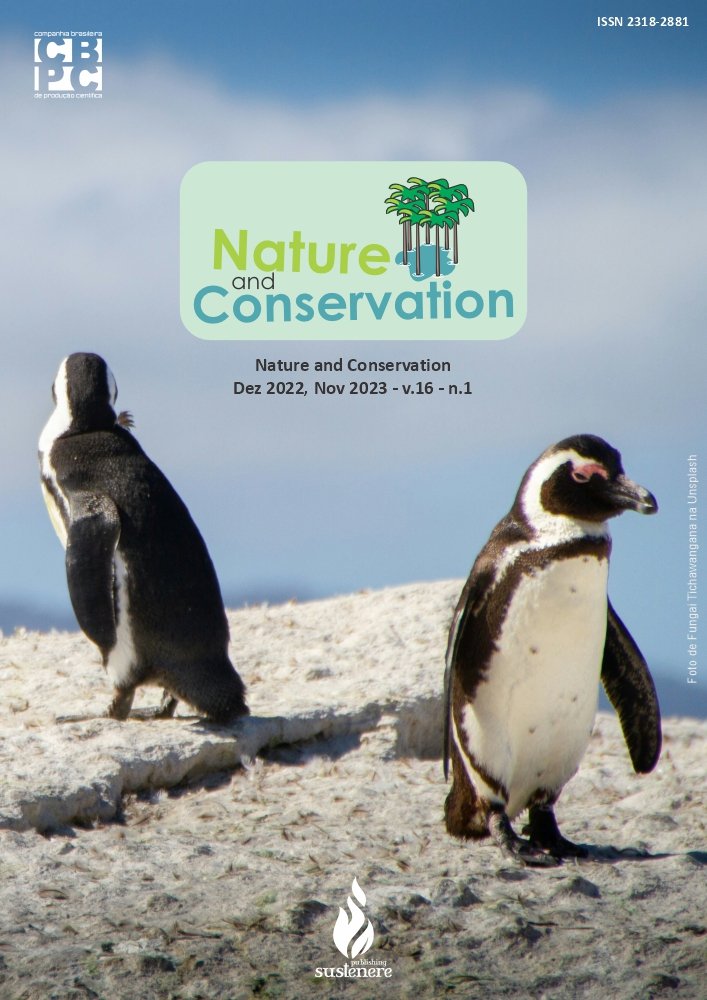Occupation of permanent preservation areas by the salt industry and potential economic impacts of mangrove recovery
DOI:
https://doi.org/10.6008/CBPC2179-6858.2022.011.0018Keywords:
Environmental conflicts, Forest Code, Opportunity cost, Mangrove, SalinasAbstract
Despite its economic and social importance, salt extraction depends on the occupation of large areas on the banks of estuaries and bays and many of them constitute a Permanent Preservation Area (PPA). Faced with this socioeconomic-environmental conflict, the objective was to map land use by the salt industry in APPs and estimate the economic impact resulting from the recovery of mangrove areas. Therefore, the land use class of the PPA of the Apodi/Mossoró river estuary was mapped. The images were georeferenced, vectorized and then the corresponding PPA strips were generated, which were classified into two classes of land use and occupation: Solar saltworks and Mangroves. Subsequently, the solar saltworks class was subdivided into three subclasses: Evaporators, Concentrators and Crystallizers. Values were assigned for each type of land use. To estimate the possible impacts of a recovery project, 4 scenarios were created: 1 - Current Scenario; 2 - Recovery of the entire PPA occupied by salt pans; 3 - Recovery of areas occupied by Evaporators and Concentrators and, 4 - Recovery only of areas occupied by Evaporators. Subsequently, to determine which model would be more economically advantageous, each scenario was compared with the estimated revenue for Scenario 1 – current (without recovery of occupied PPA areas), thus obtaining the Opportunity Cost, being considered the most advantageous model. the one with the lowest cost. It was observed that less than ¼ of the land cover corresponds to mangrove vegetation, being the largest area occupied by Solar saltworks, and among them, mainly, by the categories Evaporators, Crystallizers and Concentrators, respectively. The Scenarios that estimate the recovery of the entire PPA occupied by solar saltworks, as well as the recovery of the areas occupied by Evaporators and Concentrators, provide a negative impact on business activity, direct and indirect jobs and, consequently, the local and national economy. Possibly, the adoption of the Scenario that foresees the recovery and conversion of evaporators in mangrove areas, while there is the conservation of the areas of Concentrators and Crystallizers in the Solar saltworks would be more viable, as it makes it possible to triple the mangrove area of the Apodi/Mossoró River estuary, in addition to a substantial increase in revenue per year through the ecosystem services provided by this ecosystem.
Downloads
Downloads
Published
Issue
Section
License
Copyright (c) 2023 Ibero-American Journal of Environmental Sciences

This work is licensed under a Creative Commons Attribution-NonCommercial-NoDerivatives 4.0 International License.
The CBPC - Companhia Brasileira de Produção Científica (Brazil CNPJ: 11.221.422/0001-03) the material rights of the published works. The rights relate to the publication of the work anywhere in the world, including rights to renewals, expansions and dissemination of the contribution, as well as other subsidiary rights. All electronically published works may subsequently be published in printed collections under the coordination of this company and / or its partners. The authors preserve the copyright, but are not allowed to publish the contribution in another medium, printed or digital, in Portuguese or in translation.









